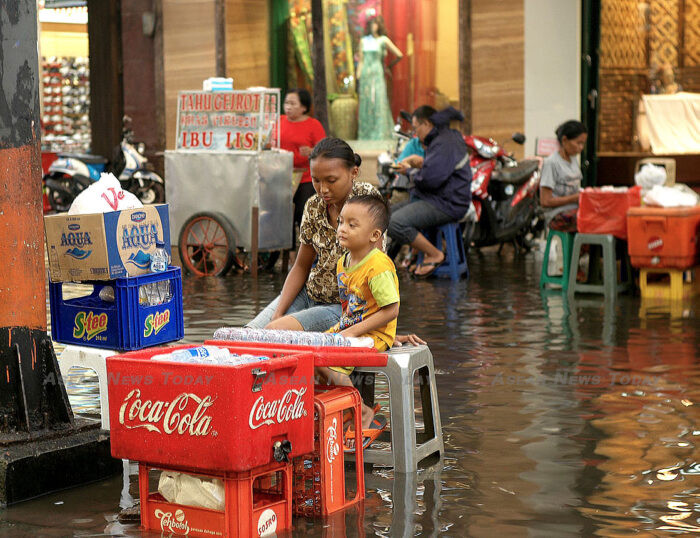In a chilling scenario reminiscent of military blunders of the past, countries in the Asia-Pacific (AP) region find themselves on the brink of defeat at the hands of a formidable foe – the hyperthreat of climate change and environmental crisis.
This relentless adversary has unleashed a series of devastating assaults globally, with the AP region not escaping the onslaught of scorching heat waves, violent storms, and rising sea levels.
The rapid acceleration of this crisis has led many scientists to admit that our understanding of its true nature remains woefully inadequate.
The day of reckoning for an effective response to this looming catastrophe was January 1, 2020, the date that that the Paris Climate Agreement came into effect.
However, instead of heeding the dire warnings and sprinting towards a low-carbon future, the region took a catastrophic detour, doubling down on greenhouse gas emissions and approving a slew of ‘carbon bomb’ fossil fuel projects.
This self-destructive behavior was evident across the region, from Indonesia’s rampant deforestation to Vietnam’s reliance on coal-fired power plants.
The recent failure of Asean leaders to reach a concrete agreement on cutting fossil fuels further underscores the collective inaction that has allowed this crisis to fester.
Disorganised and woefully unprepared

As the hyperthreat’s formidable forces gather strength, the ‘Blue Force’ – humanity’s hyper response – remains scattered, disorganized, and woefully unprepared, while across the Asia-Pacific region communities and island-nations continue to confront the enemy head-on.
Proponents of change are often met with resistance and suppression, while the hyperthreat has stealthily infiltrated the region’s governance, legal, finance, and communication systems, and at times, its security forces.
With the hyperthreat’s main body forces uncontained, the effects are set to be felt from 2030 onwards. Recognizing the impending doom, billionaires, have resorted to Plan B: bunker building.
A renegade emerges

Amidst this chaos, a renegade emerges – a rebellious thinker who defies categorization, blending military expertise, climate awareness, theoretical acumen, and a touch of eco-theology.
Unbound by tribal allegiances and the conventional trappings of military theorists, this individual recognizes the hyperthreat for what it is – a monstrous entity unlike any humanity has ever encountered.
Breaking free from the confines of conventional climate-security discourse, the renegade, Dr Elizabeth Boulton PhD, a research affiliate at the UK’s climate change & (in) security project, reframes climate and environmental change not as a mere ‘influence’ on the environment but as the primary threat itself.
This radical shift in perception exposes the hyperthreat’s true nature – a new form of violence, a Frankenstein-like force of destruction that dwarfs any threat humanity has faced before.
Grand strategy for climate security: PLAN E
The renegade’s approach extends beyond mere analysis to encompass a comprehensive ‘grand strategy’ for climate security in the 21st century, aptly titled PLAN E.
This groundbreaking plan, published by the US Marine Corps University Press in 2022, challenges the status quo and offers a roadmap for a regional emergency response.
PLAN E’s six-phase Hyper-Response strategy, spanning from 2023 to 2100, represents the last chance to salvage a habitable planet.

At the heart of this strategy lies the establishment of a ‘Planetary Emergency Peace Treaty’ and a new ‘rules-based order’ centered on ensuring foundational planetary security – a habitable planet.
This includes the introduction of new legal frameworks, such as ecocide laws, to hold corporations accountable for their role in environmental destruction, along with prioritizing the rescue of the world’s most vital asset – its ecosystems.
Dr Elizabeth Boulton will detail PLAN E and its concepts and implications for global and regional security in a free online Webinar on Tuesday November 28 between 19:30 and 20:30 hrs (AEDT – Australian Eastern Daylight Time/ 3:30 – 4:30pm ICT – Indochina Time/ 12:30 – 13:30 UT – Universal Time).
For more details on PLAN E or the Webinar visit Destination Safe Earth.
To participate in the PLAN E webinar click here to Register.
The discussion will be available online after the event as part of the Doctors for the Environment Australia (DEA) “After Hours Webinar Series”.
Feature photo Humanitix
Related:
- An Introduction to PLAN E (Marine Corps University)
- Disaster resilience week aims to boost early warnings for all (video) (Asean News Today)
- Is Asia and the Pacific ready for the global climate stage? (video) (Asean News Today)
- Central Java: This is climate change (video) (Asean News Today)


